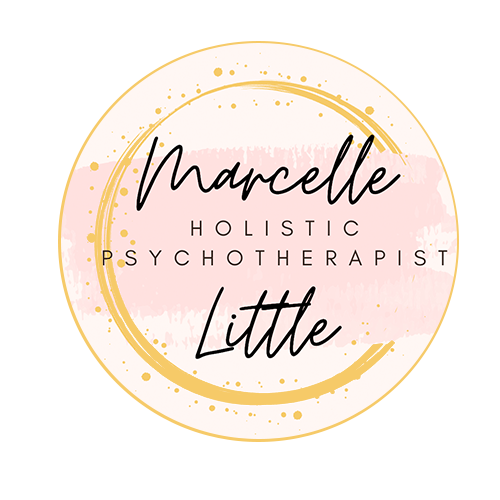Mindfulness and Emotional Regulation: A Path to Balance for Empaths and Highly Sensitive People
In today’s fast-paced world, the ability to regulate our emotions is crucial for maintaining mental and emotional well-being. For those who identify as people-pleasers, codependents, empaths, or highly sensitive individuals, emotional regulation can feel particularly challenging. The good news? Mindfulness offers practical tools to help you stay grounded and resilient, even in overwhelming situations.
This blog explores the connection between mindfulness and emotional regulation, offering insights, techniques, and research-backed practices tailored for those navigating heightened emotional experiences.
Understanding Emotional Regulation
Emotional regulation refers to the ability to monitor, evaluate, and adjust your emotional reactions. This skill allows you to respond thoughtfully rather than react impulsively, fostering healthier interactions and greater emotional stability.
Why It Matters: Emotional regulation plays a critical role in mental health, relationships, and overall quality of life. Struggles with emotional regulation can lead to anxiety, depression, and interpersonal difficulties.
Triggers and Awareness: Recognizing emotional triggers is the first step toward transforming reactive behaviors into thoughtful responses. Awareness creates space to respond with intention rather than reactivity.
For highly sensitive individuals and empaths, emotional regulation is even more essential, as you may feel others’ emotions intensely or become overwhelmed by external stimuli.
What is Mindfulness?
Mindfulness is the practice of paying attention intentionally, without judgment. It involves seeing things as they are—not as we wish them to be or fear they might become. This perspective helps you stay present and grounded, even in challenging situations.
Mindfulness requires deliberate practice, using techniques that bring you back to the present moment. It reminds us that we can regulate our own emotional systems instead of fantasizing about someone else doing it for us. While it takes time, mindfulness—when practiced consistently—can lead to profound and rapid shifts in how we experience and manage emotions.
The Connection Between Mindfulness and Emotional Regulation
Research consistently shows that mindfulness enhances emotional regulation by fostering acceptance and reducing emotional reactivity. Key findings include:
Increased Awareness: Mindfulness helps individuals become more aware of their emotions, making it easier to respond with intention rather than impulsivity.
Reduced Reactivity: Studies indicate that mindfulness practices lower levels of emotional reactivity, enabling people to navigate challenging situations with greater composure.
Enhanced Resilience: Regular mindfulness practice builds resilience, allowing individuals to recover more quickly from emotional setbacks.
For empaths and highly sensitive people, mindfulness serves as a buffer against the overwhelming feelings that can arise from absorbing others’ emotions.
Sources:
[Kabat-Zinn, J. (1990). Full Catastrophe Living]
[Hölzel, B.K., et al. (2011). Mindfulness practice leads to increases in regional brain gray matter density. Psychiatry Research: Neuroimaging.]
[Guendelman, S., et al. (2017). Mindfulness and emotion regulation: Insights from neurobiological, psychological, and clinical studies. Frontiers in Psychology.]
Practical Mindfulness Techniques
1. The STOP Mindfulness Technique
This evidence-based technique is a simple and effective way to regulate emotions in real-time:
S – Stop: Pause what you’re doing, even if just for a moment.
T – Take a Breath: Take a few slow, deep breaths to center yourself and calm your system.
O – Observe: Notice what’s happening in your body, mind, and surroundings without judgment. Are your shoulders tense? Is your heart racing? Acknowledge these sensations.
P – Proceed: Move forward intentionally, choosing how to respond rather than reacting impulsively.
The STOP technique is particularly helpful for highly sensitive individuals who may feel overwhelmed by others’ emotions or external stressors.
2. Breath Awareness
Spend a few minutes each day focusing on your breath. This simple practice calms your nervous system and anchors you in the present moment.
3. Body Scan Meditation
Gradually bring attention to different parts of your body, noticing tension or discomfort and releasing it. This is especially helpful in emotionally charged situations, allowing you to connect with your body and ground yourself.
4. Mindful Sensory Walks
Take a walk, paying attention to the sights, sounds, and sensations around you. This practice helps shift focus away from overwhelming emotions and provides a sense of grounding.
Applying Mindfulness to Highly Sensitive Individuals
For empaths and highly sensitive people, mindfulness offers tailored strategies to navigate the unique challenges of heightened emotional experiences.
Set Boundaries with Awareness: Use mindfulness to tune into what your body and mind are telling you about your limits. This awareness can help you recognize when to step back from emotionally draining situations.
Anchor Yourself in the Present: When overwhelmed by external emotions, mindfulness techniques like breath awareness or the STOP method can help you return to your own emotional center.
Customize Your Practice: Each person is unique, so experiment with different mindfulness techniques to find what works best for you. The key is to start where you are, whether that’s a few mindful breaths a day or a longer meditation practice.
Benefits of Mindfulness for Emotional Regulation
Consistent mindfulness practice offers numerous benefits, including:
Improved Mood: Studies show that mindfulness reduces symptoms of anxiety and depression, fostering a more balanced emotional state.
Better Coping Strategies: Mindfulness enhances resilience, helping you navigate stress and recover from emotional setbacks more effectively.
Increased Emotional Awareness: By staying present, mindfulness deepens your understanding of your emotions and helps you respond thoughtfully.
Challenges in Practicing Mindfulness
While mindfulness is powerful, it’s not without challenges:
Difficulty Staying Focused: It’s normal for your mind to wander during practice. When this happens, gently bring your attention back to your breath or the present moment without judgment.
Discomfort with Emotions: Confronting uncomfortable feelings can be intimidating, but mindfulness encourages you to face them with compassion and curiosity, creating a pathway for healing.
Incorporating Mindfulness Into Daily Life
Mindfulness doesn’t have to mean long meditation sessions. It can be seamlessly woven into everyday life:
Take a few mindful breaths before responding to a stressful email.
Practice gratitude by noticing small joys throughout your day.
Engage in mindful eating, focusing on the taste, texture, and smell of your food.

